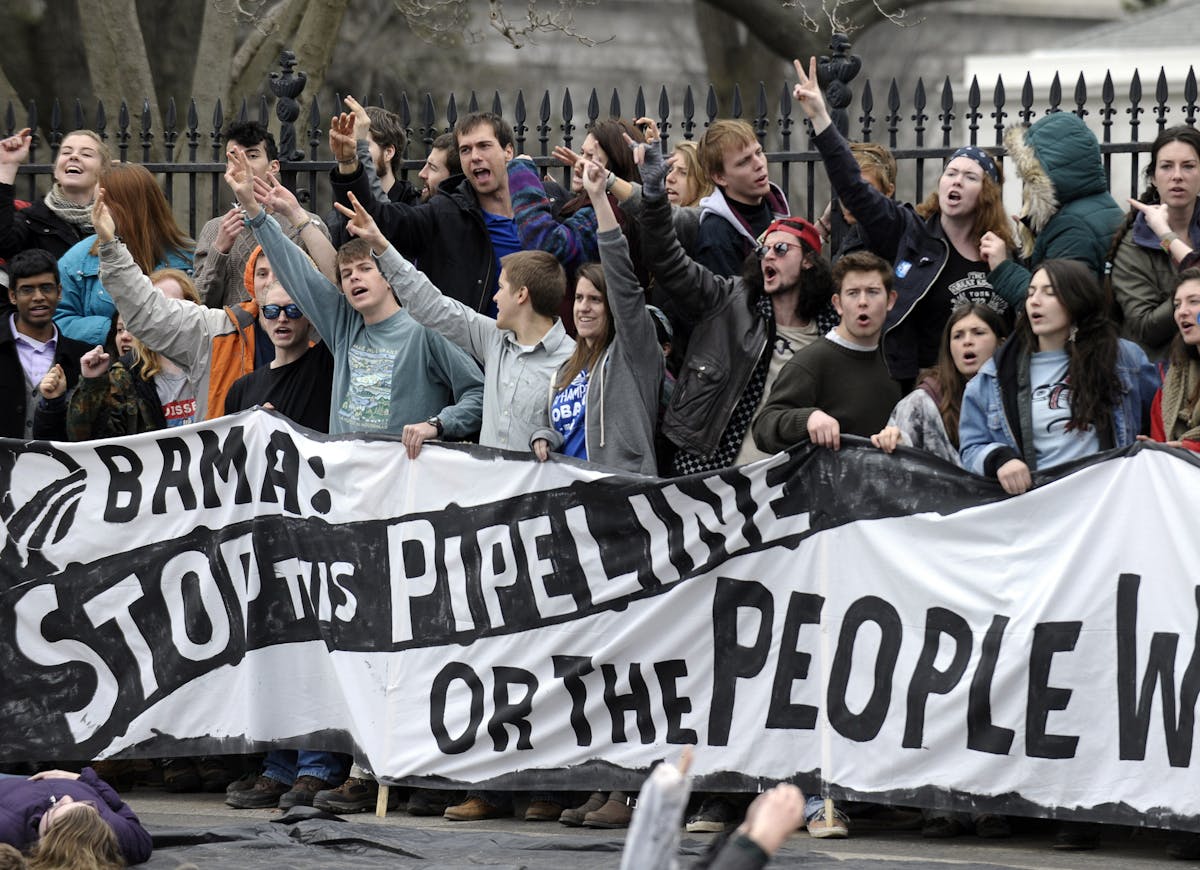A state study of six alternative routes for a proposed northern Minnesota crude oil pipeline has found serious environmental risks with all of them.
The lengthy report confirmed key weaknesses raised by critics of Enbridge Energy's preferred route for the $2.6 billion Sandpiper pipeline. It would cross the most acres of wetlands and public lands on its 610-mile path from North Dakota to Wisconsin, the study found.
But Enbridge's Z-shaped route through Minnesota's northern lakes region fared better than alternatives in important ways. Compared with six alternates, it would have the fewest stream crossings, encroach on the least number of cities and put at risk the fewest drinking water "high consequence areas," the study found.
The state Commerce Department's environmental review unit did the study for the Minnesota Public Utilities Commission. It must decide, probably by mid-2015, whether the pipeline is needed, and whether it belongs Up North, where Enbridge has operated oil pipelines since the 1950s.
Environmental groups and two state agencies have raised concerns about Enbridge's preferred route, saying it crosses wetlands, aquifers and the headwaters of the Mississippi River, puts wild rice and walleye lakes at risk and is so remote that emergency roads would need to be built if spills happened in some isolated spots.
Six alternatives proposed by the government or interest groups would run south of Enbridge's route. They mostly follow highways or other pipelines, and are less remote. But they would be closer to people and water supplies, and all but one crosses more streams than Enbridge's planned route, the study found.
The Calgary-based pipeline company contends the alternatives — some of which are significantly longer — would be more costly to build and operate. The company says it has made right of way deals with 92 percent of landowners on the preferred route. Some landowner and environmental concerns are addressed by course corrections, a standard part of pipeline route reviews.
"We believe our proposed Sandpiper route provides the best balance for the state of Minnesota," company spokeswoman Lorraine Little said in an e-mail. "It is the shortest, follows existing pipelines and transmission lines for 75 percent of the route, impacts fewer landowners and high-population areas, and affects fewer natural resources overall."
Enbridge's preferred route will be the subject of a separate state environmental review. The report released Thursday was a "high-level" look at alternatives. Friends of the Headwaters, a Park Rapids-based group that opposes Enbridge's route, sued the commission in state court a week ago, asserting that approach is insufficient.
"It doesn't discuss the impacts of constructing a pipeline in a wetland or a forested landscape," said Leigh Currie, attorney for the Minnesota Center for Environmental Advocacy, a nonprofit St. Paul law firm representing the headwaters group. "It doesn't discuss the potential risk of a leak or rupture in any of these locations."
Currie said full environmental reviews start with "scoping" sessions where experts and the public can tell state officials about environmental concerns worth studying. After a draft of the results is released, she said, people comment on the findings, which often leads to important changes in the final report.
For this study, analysts for the state used mapping software to compare pipeline routes, overlaying them on maps depicting waterways, wildlife, populated areas and ecological features. In an unusual step, the study analyzed environmental risks in nearby states. That was done to help regulators avoid picking a route that's good for Minnesota's environment but bad for neighboring states.
Yet the researchers didn't rank the proposals or pick the best and worst.
Instead, the report said the findings are "intended for the use of any party who chooses to advocate for or against" a proposed route during the regulatory review. That process will include public meetings in January and a trial-like evidentiary hearing before an administrative law judge. Enbridge hopes to complete the line in 2017, a year behind its original schedule.
Among other findings, the study concluded that every pipeline route potentially would cross areas with endangered and threatened plants and animals, or species that are candidates for protection. The list includes the whooping crane, five types of mussels, the pallid sturgeon, the Canada lynx, two bats and such rare plants as the eastern prairie fringed orchid.
One notable alternative would follow the Viking Gas Transmission Co. pipeline that carries natural gas from Canada to the United States. It would go through the Detroit Lakes area on a southeastern course. The study found the route, which was suggested by the Minnesota Pollution Control Agency, would cross more streams at more places than Enbridge's preferred route, but somewhat fewer lakes and wetlands.
David Shaffer • 612-673-7090 Twitter: @ShafferStrib
